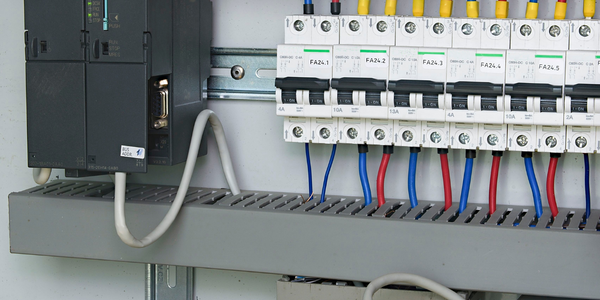Customer Company Size
Large Corporate
Region
- America
Country
- United States
Product
- JDA Demand Planner
- JDA Inventory Optimization
- JDA Order Promiser
- JDA Scenario Analyzer
- JDA Supply Chain Planner
Tech Stack
- Cloud Services
Implementation Scale
- Enterprise-wide Deployment
Impact Metrics
- Productivity Improvements
- Cost Savings
Technology Category
- Platform as a Service (PaaS) - Data Management Platforms
Applicable Industries
- Electronics
Applicable Functions
- Discrete Manufacturing
- Logistics & Transportation
Use Cases
- Inventory Management
- Supply Chain Visibility
Services
- Cloud Planning, Design & Implementation Services
About The Customer
Fairchild Semiconductor is a major player in the semiconductor industry, designing and delivering high-performance semiconductors that enable mobile connectivity and optimize energy consumption. With a $1.5 billion runrate based on first quarter 2010 results, the company’s diversified product line includes power management and signal-path integrated circuits, logic and optoelectronic devices for power supply, portable, lighting, motor, computing, consumer and automotive applications. The company reported first quarter 2010 sales of $378 million, up 7 percent from the prior quarter and 69 percent higher than the first quarter of 2009.
The Challenge
Fairchild Semiconductor, a major player in the semiconductor industry, faced significant challenges following the global financial crisis in 2008 and 2009. The industry experienced an unprecedented downturn, followed by a dramatic upturn in customer demand, driven by computing and mobile technologies. Fairchild Semiconductor had to deal with extremely volatile demand, a global shortage of manufacturing capacity, growing lead times, and scarce supply. The company reported first quarter 2010 sales of $378 million, up 7 percent from the prior quarter and 69 percent higher than the first quarter of 2009. To offset this increase in demand, Fairchild Semiconductor needed to increase manufacturing capacity and capabilities with minimal capital investment.
The Solution
Fairchild Semiconductor implemented JDA’s Inventory Optimization and Scenario Analyzer solutions for more sophisticated inventory modeling capabilities and better scenario management techniques. The company took a speed-to-value approach to install JDA’s solutions, opting to have JDA host the solutions. This ensured that Fairchild Semiconductor achieved a quick return on its technology investment. JDA Inventory Optimization supports Fairchild Semiconductor’s monthly planning cycle by aligning day-to-day inventory plans with top-level goals. Based on consumption patterns, criticality, velocity and other key attributes, the solution enables Fairchild Semiconductor to govern products by a set of highly customized inventory strategies. The data obtained from JDA Inventory Optimization is integrated with JDA Scenario Analyzer, which allows Fairchild Semiconductor to run different scenarios using criteria such as priority schemes and bill of materials.
Operational Impact
Quantitative Benefit

Case Study missing?
Start adding your own!
Register with your work email and create a new case study profile for your business.
Related Case Studies.

Case Study
Remote Temperature Monitoring of Perishable Goods Saves Money
RMONI was facing temperature monitoring challenges in a cold chain business. A cold chain must be established and maintained to ensure goods have been properly refrigerated during every step of the process, making temperature monitoring a critical business function. Manual registration practice can be very costly, labor intensive and prone to mistakes.

Case Study
Predictive maintenance in Schneider Electric
Schneider Electric Le Vaudreuil factory in France is recognized by the World Economic Forum as one of the world’s top nine most advanced “lighthouse” sites, applying Fourth Industrial Revolution technologies at large scale. It was experiencing machine-health and unplanned downtime issues on a critical machine within their manufacturing process. They were looking for a solution that could easily leverage existing machine data feeds, be used by machine operators without requiring complex setup or extensive training, and with a fast return on investment.

Case Study
Cloud Solution for Energy Management Platform-Schneider Electric
Schneider Electric required a cloud solution for its energy management platform to manage high computational operations, which were essential for catering to client requirements. As the business involves storage and analysis of huge amounts of data, the company also needed a convenient and scalable storage solution to facilitate operations efficiently.

Case Study
Leveraging the IoT to Gain a Competitive Edge in International Competition
Many large manufacturers in and outside Japan are competing for larger market share in the same space, expecting a growing demand for projectors in the areas of entertainment, which requires glamor and strong visual performance as well as digital signage that can attract people’s attention. “It is becoming more and more difficult to differentiate ourselves with stand-alone hardware products,” says Kazuyuki Kitagawa, Director of Service & Support at Panasonic AVC Networks. “In order for Panasonic to grow market share and overall business, it is essential for us to develop solutions that deliver significant added value.” Panasonic believes projection failure and quality deterioration should never happen. This is what and has driven them to make their projectors IoT-enabled. More specifically, Panasonic has developed a system that collects data from projectors, visualizes detailed operational statuses, and predicts issues and address them before failure occurs. Their projectors are embedded with a variety of sensors that measure power supply, voltage, video input/ output signals, intake/exhaust air temperatures, cooling fan operations, and light bulb operating time. These sensors have been used to make the projector more intelligent, automatically suspending operation when the temperature rises excessively, and automatically switching light bulbs. Although this was a great first step, Panasonic projectors were still not equipped with any capability to send the data over a network.









